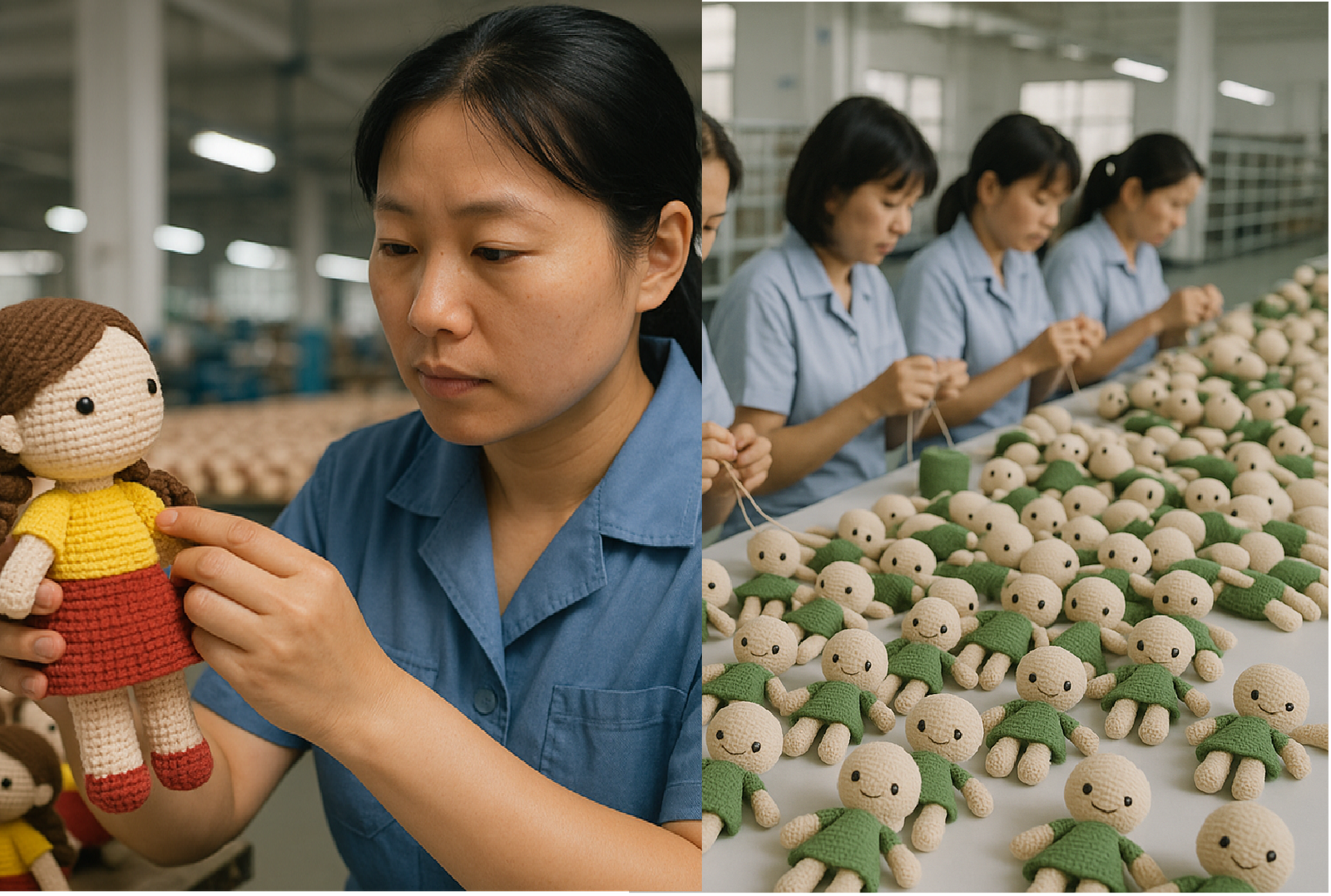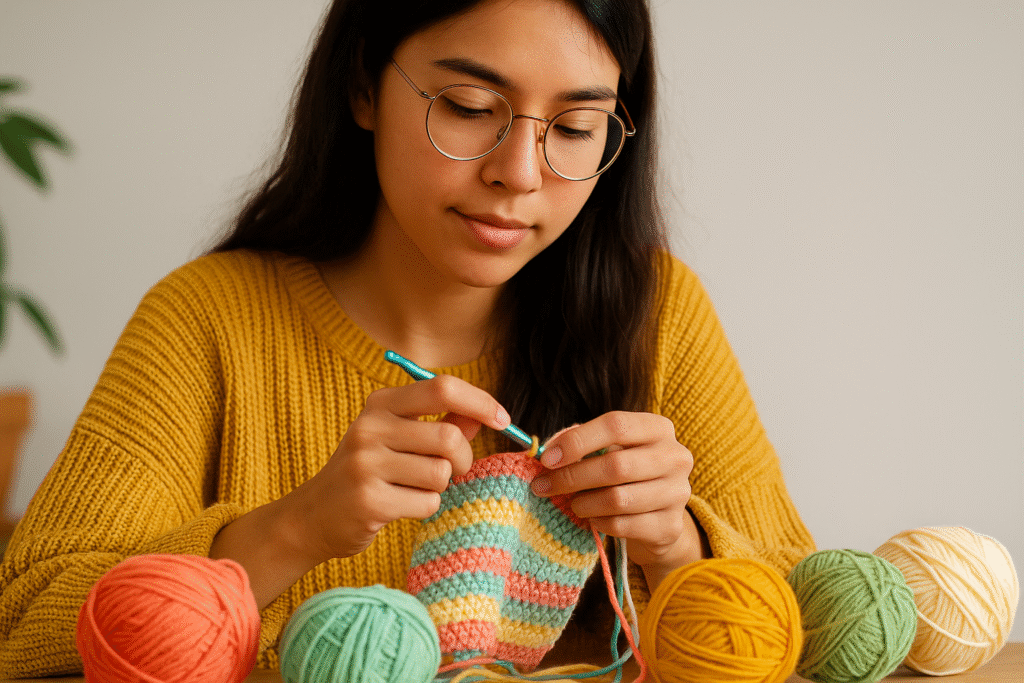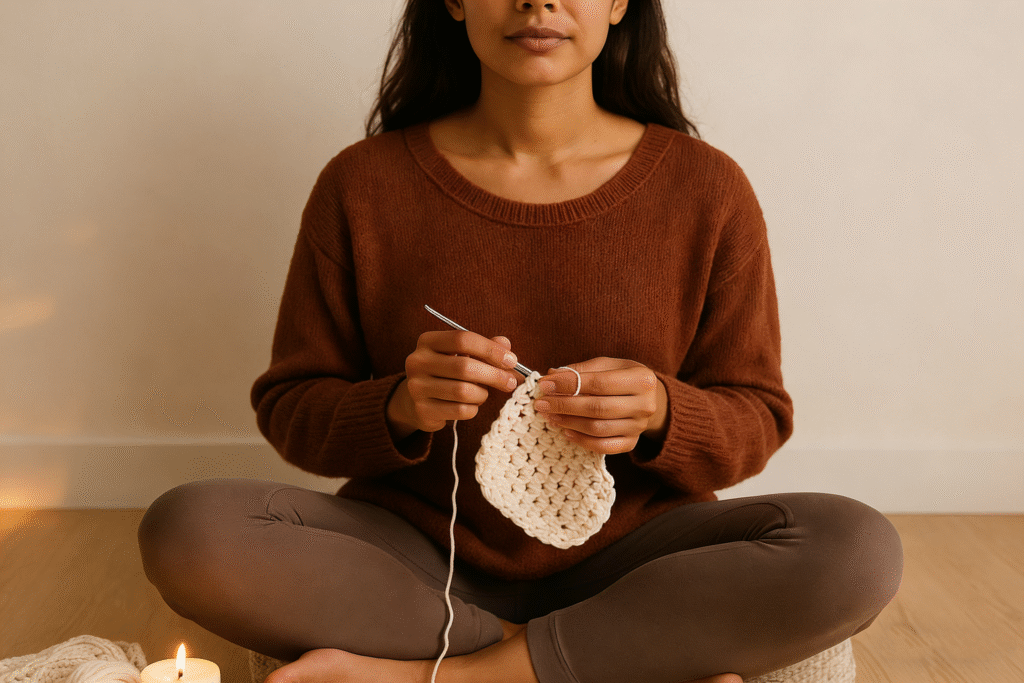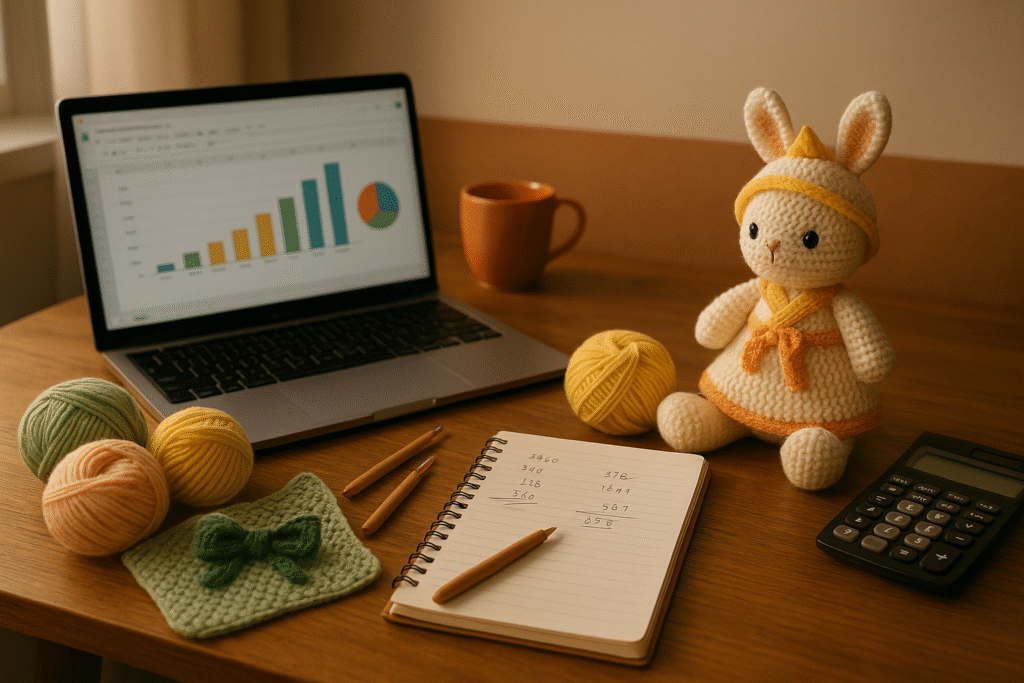You've heard the term "knitter" but aren't sure what to call someone who works with a hook and yarn instead of needles. Using the right term shows respect for the craft and connects you properly to crafting communities.
A person who crochets is commonly called a crocheter. Other terms include hookers (historical, now less common), fiber artists, or crafters. The term emphasizes their skill in creating fabric using a hook and yarn through interlocking loops.

A person who crochets is commonly called a crocheter. Other terms include hookers (historical, now less common), fiber artists, or crafters. The term emphasizes their skill in creating fabric using a hook and yarn through interlocking loops.)
Throughout my time in the crafting industry, I've noticed how terminology evolves and varies across different regions and communities. Our lead designer, once corrected her new assistant during a meeting when she mistakenly used "knitter" to refer to a crochet artisan. This experience highlighted how precise terminology matters not just for correctness but also for acknowledging the specialized skills of each craft.
What Do You Call Someone Who Crochets? A Crocheter—And at UMY, an Artisan
You want to properly credit and acknowledge the people who create crochet products for your brand but aren't sure how to describe their role accurately. Misunderstanding their contribution could lead to undervaluing the craftsmanship that sets your products apart.
While individuals who crochet are called crocheters, hookers, or fiber artists, UMY celebrates them as skilled artisans whose craftsmanship allows brands to offer authentic, handmade-quality products at scale.

Let's explore exactly what makes a crocheter an artisan worthy of professional recognition. First, the skill development path of a crocheter is both structured and personal. Most start with basic stitches like chain, single, and double crochet, gradually progressing to complex patterns, stitch combinations, and specialized techniques that can take years to master. At UMY, our artisans undergo rigorous training to ensure consistency while preserving their individual creative touch.
Second, crocheters combine technical precision with artistic vision. Unlike machine production, each crochet piece reflects the maker's decisions about tension, stitch placement, and finishing details. Our artisans develop an intuitive understanding of how different yarns behave, allowing them to adjust their technique for optimal results. This expertise enables us to create products that look handmade but meet the consistency standards required for commercial production.
Third, crocheters play crucial roles in the product development process. Beyond execution, they often contribute pattern adjustments, material recommendations, and quality insights that machines cannot provide. We've created a collaborative environment where our artisans work directly with designers to refine patterns before they go into full production, ensuring both aesthetic appeal and manufacturability.
Here's how crocheters contribute to the creation of high-quality plush products:
| Contribution | Crochet Artisan Impact | Business Benefits |
|---|---|---|
| Technical Expertise | Mastery of stitches and techniques | Consistent quality across products |
| Material Knowledge | Understanding yarn properties | Optimal material selection for durability and feel |
| Problem Solving | Ability to adjust patterns mid-production | Reduced waste and faster production cycles |
| Creativity | Input on design improvements | Unique products that stand out in the market |
| Quality Control | Identifying issues before final production | Higher customer satisfaction and fewer returns |
I recall working with a luxury children's brand last year that was transitioning from machine-sewn to handmade crochet elements. Initially, they were concerned about consistency and scalability. After introducing them to our team of crochet artisans, they were amazed at how skilled craftsmanship could elevate their products. The brand manager later told me that customers specifically mentioned the "attention to detail" and "handmade quality" in their reviews, with many purchasing multiple items. This experience demonstrated how professional crocheters can transform a product line and create genuine market differentiation.
Conclusion
A person who crochets is called a crocheter or artisan, and their skilled craftsmanship brings authentic handmade quality to products




